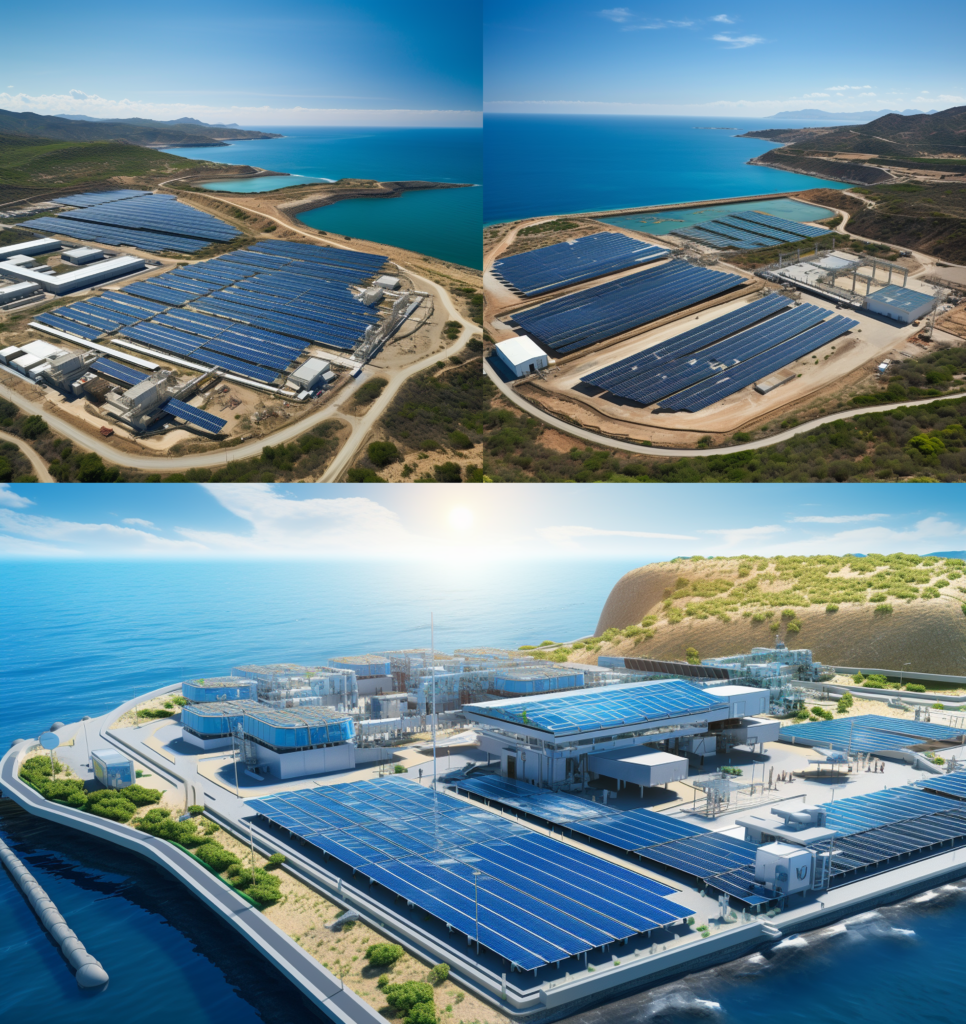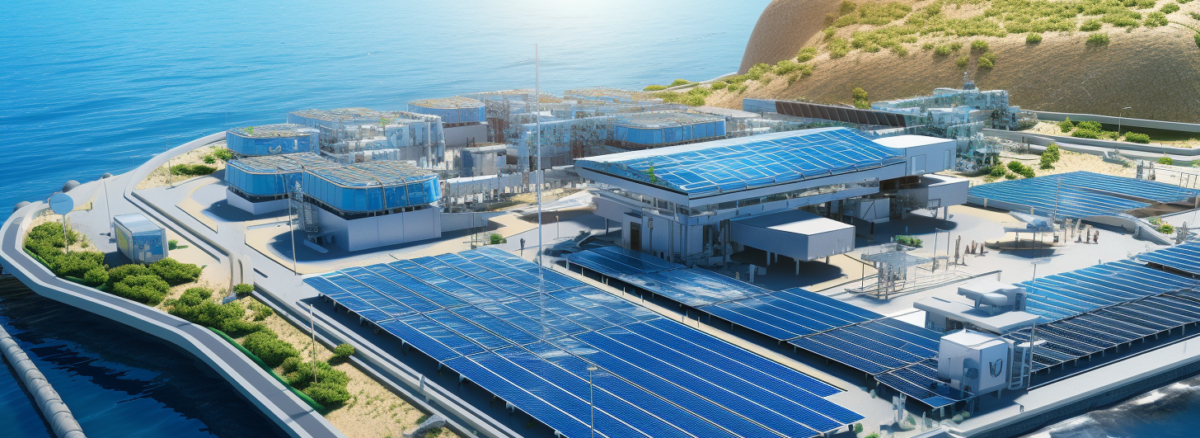- 15 December, 2023
- Francisco Gallego
- Comment: 0
- News

Integration of Photovoltaic Energy Systems (IPP) for Desalination Plants (SWRO)

In recent years, the team at MEP-Projects has played a pivotal role in various high-capacity desalination plant projects for the production of potable water. It is evident that our clients are increasingly opting for photovoltaic energy generation systems that allow these plants to operate partially or fully. The objective is to optimize the costs associated with water generation per cubic meter in relation to the energy cost per kilowatt-hour.
Through our experience in various projects, we have identified specific needs to incorporate photovoltaic plants into new desalination projects as well as existing facilities. In this article, we will explore these needs in detail, addressing the question: What considerations are fundamental for integrating a photovoltaic plant that supplies energy to a new or existing desalination plant?
Considerations by Discipline for Integrating a Photovoltaic Plant in a Desalination Plant:
Electrical Discipline:
1. Determine the capacity of the main busbars to handle the energy evacuated from the photovoltaic plant. Admissible intensity.
2. Evaluate variations in the power factor at the desalination plant, caused by the inductive nature of the photovoltaic installation.
3. Ensure a low THD (Total Harmonic Distortion) despite the inclusion of inverters in the photovoltaic plant.
4. Verify short-circuit levels on busbars and existing protections.
5. Ensure sufficient space for new electrical conduits.
6. Adjust the parameterization of protection relays to consider the operation of the photovoltaic plant.
7. Identify an appropriate connection point for integration in existing desalination plants.
Civil Discipline:
8. If the roofs of the desalination plant buildings are used for photovoltaic modules, verify structural resistance to additional weight.
9. In the above case, design platforms or maintenance walkways to facilitate access to the photovoltaic modules.
10. Implement a fire protection system that preserves the integrity of the buildings and water production in the event of a fire.
11. For physically separate but adjacent photovoltaic plants:
a. Efficiently manage space for electrical conduits.
b. Optimize design to minimize energy losses.
c. Perform design of drainage, accessibility/roads, and earth movement.
Control Discipline-Related:
12. Integrate the electrical production and protection of the photovoltaic plant with the existing control system in the desalination plant.
13. Implement machine learning algorithms to predict photovoltaic electrical production based on weather forecasts, thus anticipating the desalination plant’s electrical demand.
Other Aspects to Consider:
14. Maintenance and accessibility to the photovoltaic installation.
15. Selection of suitable materials for the photovoltaic installation, considering corrosion due to proximity to the sea.
If you are interested by the possibilities of leveraging Integrated Photovoltaic Energy Systems (IPP) for Seawater Reverse Osmosis Desalination Plants (SWRO), or wish to explore any of the subjects discussed herein, I warmly invite you to initiate a dialogue with MEP-Projects or to contact me personally. We are dedicated to sharing our specialized knowledge and developing bespoke solutions that precisely address your unique challenges and ambitions.
Made by Francisco Gallego (Engineering Manager).

